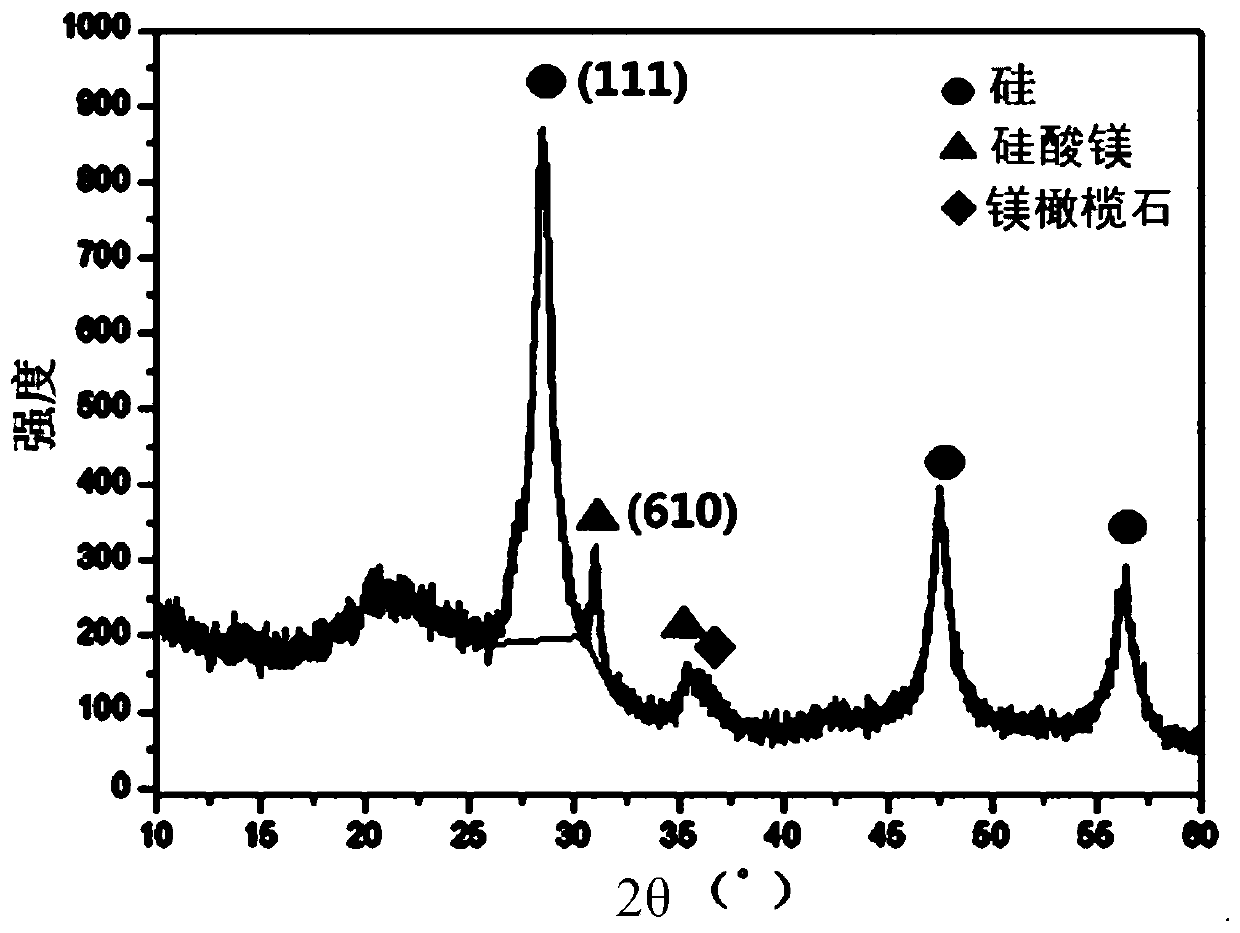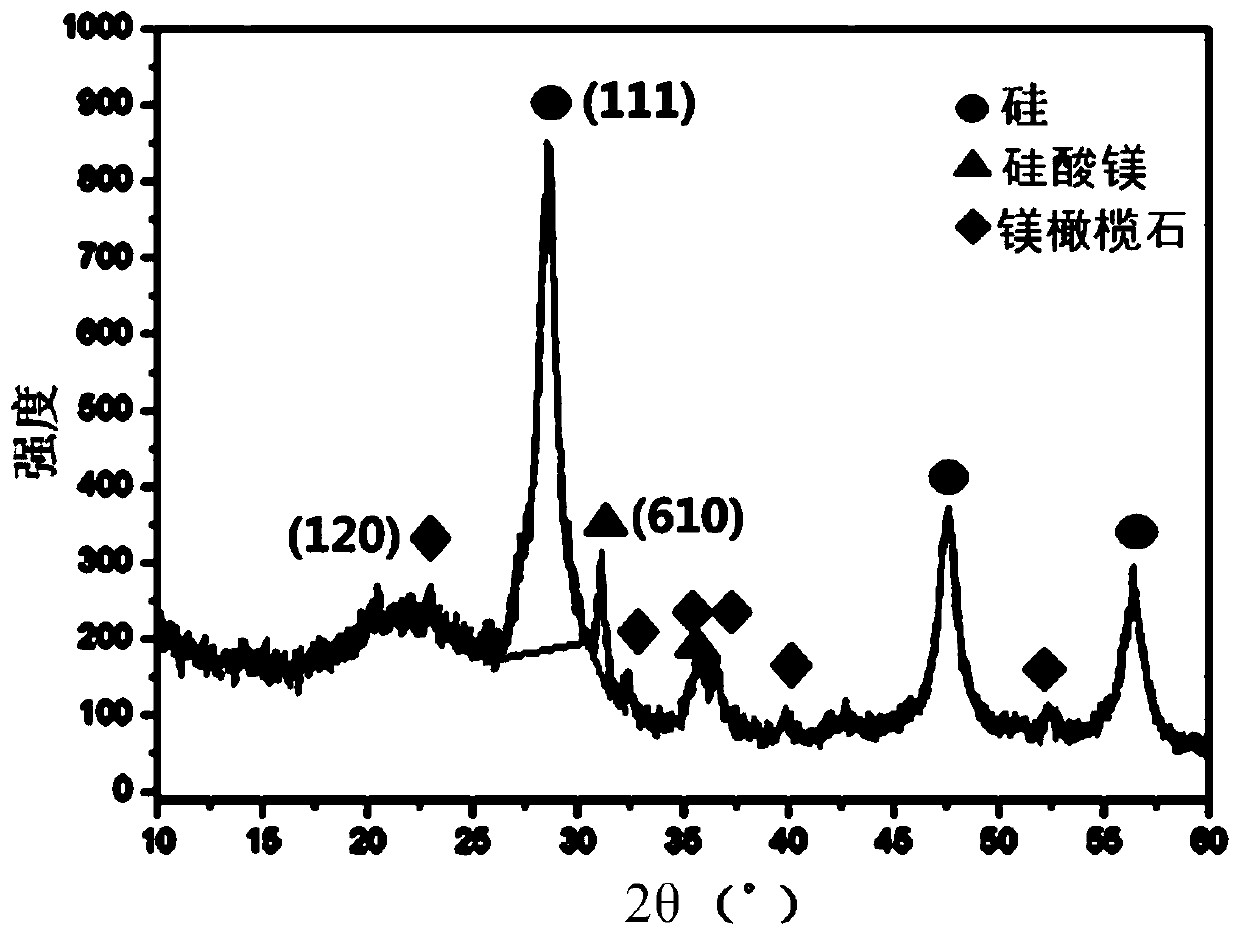Negative electrode active material for non-aqueous electrolyte secondary battery and method for producing same
A technology of negative electrode active material and non-aqueous electrolyte, which is applied in the field of negative electrode active material for non-aqueous electrolyte secondary battery and its preparation, so as to improve cycle characteristics and initial charge and discharge efficiency, improve initial efficiency, and easy to assemble and disassemble. Effect
- Summary
- Abstract
- Description
- Claims
- Application Information
AI Technical Summary
Problems solved by technology
Method used
Image
Examples
Embodiment 1
[0045] Example 1. Preparation of silicon oxide composites containing magnesium
[0046] Heat-treat 15kg of silicon powder and silicon dioxide (SiO 2 ) powder powder and 1.5kg of magnesium, the above silicon, silicon dioxide (SiO 2 ) of the mixed powder of silicon oxide vapor and magnesium vapor are simultaneously generated to react in the gas phase, cooled at a temperature of 700°C and then precipitated, and then crushed and classified with a jet mill to obtain an average particle size (D 50 ) is magnesium-silicon oxide composite powder of 6.3 μm.
[0047] In order to form a carbon-containing coating layer, the recycled silicon oxide composite powder containing magnesium is placed in argon (Ar) and methane (CH 4 ) in a mixed gas, and processed by chemical vapor deposition (CVD) for 2 hours to prepare a silicon oxide composite (sample 1).
[0048] It was confirmed from the above silica composite (sample 1) containing magnesium that the BET specific surface area was 6.2m 2 ...
Embodiment 2
[0049] Example 2. Preparation of silica composites containing magnesium
[0050] Except for precipitation after cooling at a temperature of 800°C, a silicon oxide composite containing 9% by weight of magnesium was prepared by the same method as in Example 1 above, and a carbon coating layer with a carbon content of 5% by weight was formed. SiO composite powder.
[0051] It was confirmed from the above silica composite (sample 2) containing magnesium that the BET specific surface area was 6.3m 2 / g, the specific gravity is 2.3g / cm 3 , average particle size (D 50 ) was 6.2 μm, and the size of silicon crystals measured by X-ray diffraction analysis (CuKα) was 8 nm.
Embodiment 3
[0052] Example 3. Preparation of silica composites containing magnesium
[0053] A silicon oxide composite containing 11.7% by weight of magnesium was prepared by the same method as in Example 1 above, except that precipitation was carried out after cooling at a temperature of 900° C., and a carbon coating with a carbon content of 10% by weight was prepared. layer of silicon oxide composite powder (sample 3).
[0054] It was confirmed from the above silica composite (sample 3) containing magnesium that the BET specific surface area was 5.8 m 2 / g, the specific gravity is 2.4g / cm 3 , average particle size (D 50 ) was 6.7 μm, and the size of silicon crystals measured by X-ray diffraction analysis (CuKα) was 11 nm.
PUM
| Property | Measurement | Unit |
|---|---|---|
| particle size | aaaaa | aaaaa |
| particle size | aaaaa | aaaaa |
| thickness | aaaaa | aaaaa |
Abstract
Description
Claims
Application Information
 Login to View More
Login to View More - R&D
- Intellectual Property
- Life Sciences
- Materials
- Tech Scout
- Unparalleled Data Quality
- Higher Quality Content
- 60% Fewer Hallucinations
Browse by: Latest US Patents, China's latest patents, Technical Efficacy Thesaurus, Application Domain, Technology Topic, Popular Technical Reports.
© 2025 PatSnap. All rights reserved.Legal|Privacy policy|Modern Slavery Act Transparency Statement|Sitemap|About US| Contact US: help@patsnap.com



